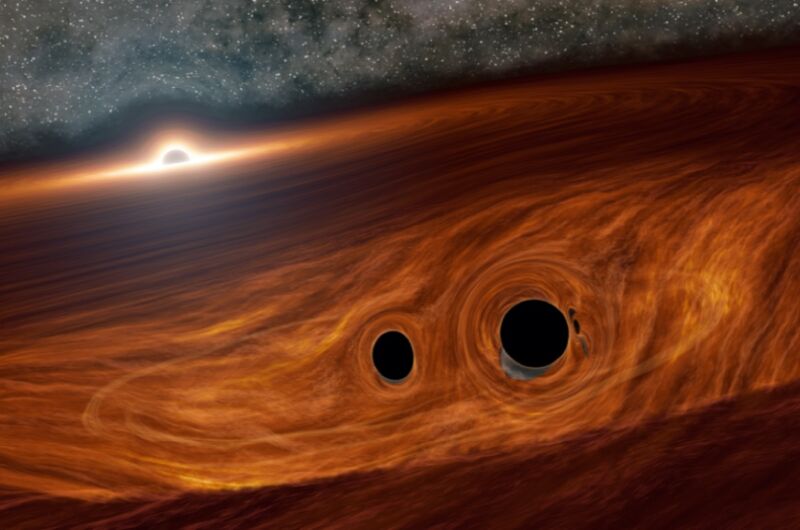
Enlarge / Artist's concept of a supermassive black hole and its surrounding accretion disk of gas. Embedded within this disk are two smaller black holes, orbiting one another, that eventually collided and may have produced a detectable burst of light. (credit: Caltech/R. Hurt (IPAC))
One of the most defining characteristics of a black hole is that nothing can escape once it passes the event horizon—not even light. So one would expect the same to be true when two black holes collide and merge. But some astronomers have posited that there could be unusual conditions in which such a merger could produce an accompanying explosion of light. By combining gravitational wave data with data collected during a robotic sky survey, one team thinks it has found the first evidence of such a phenomenon, according to a new paper in Physical Review Letters.
LIGO detects gravitational waves via laser interferometry, using high-powered lasers to measure tiny changes in the distance between two objects positioned kilometers apart. (LIGO has detectors in Hanford, Washington, and in Livingston, Louisiana. A third detector in Italy, Advanced VIRGO, came online in 2016.) On September 14, 2015, at 5:51am EST, both detectors picked up signals within milliseconds of each other for the very first time—direct evidence for two black holes spiraling inward toward each other and merging in a massive collision event that sent powerful shockwaves across spacetime.
The collaboration picked up two more black-hole mergers from that first run. The second run, from November 30, 2016, to August 25, 2017, produced seven more binary black-hole mergers (including the four just announced) and a binary neutron-star merger, supported by a simultaneous gamma-ray burst and signals in the rest of the electromagnetic spectrum, dubbed a "kilonova." It was an unprecedented recording of a major celestial event, combining light and sound, and officially marked the dawn of so-called "multi-messenger astronomy."
No comments:
Post a Comment